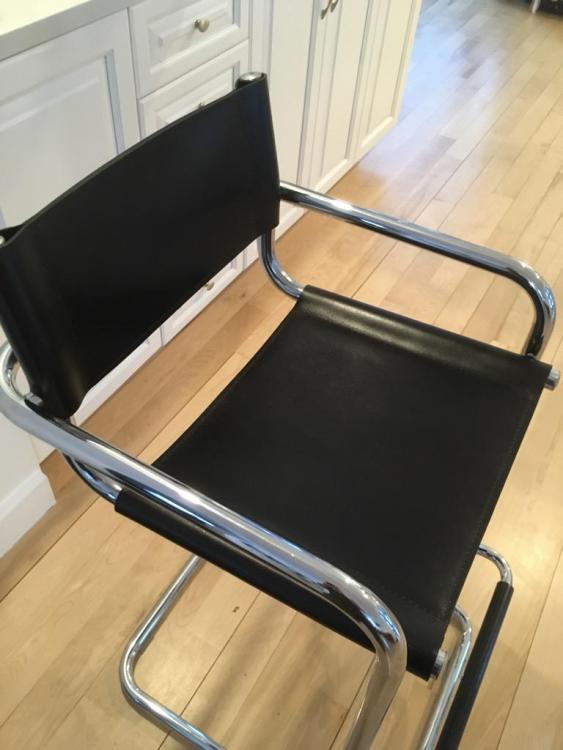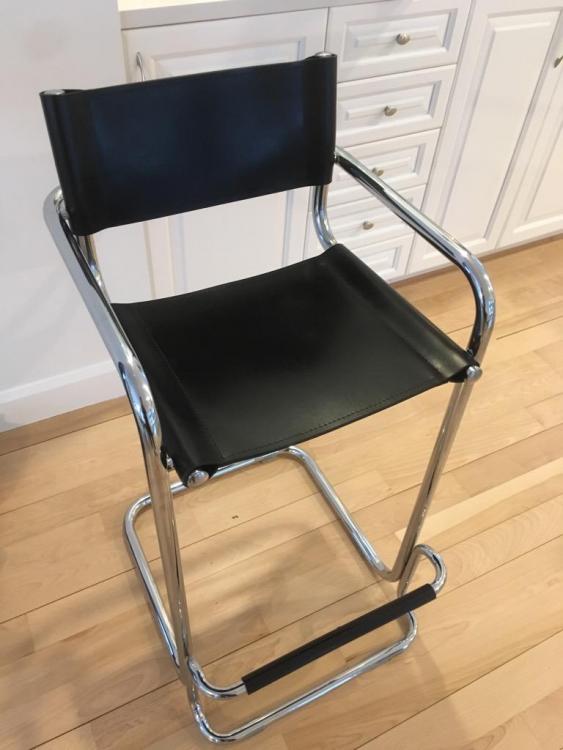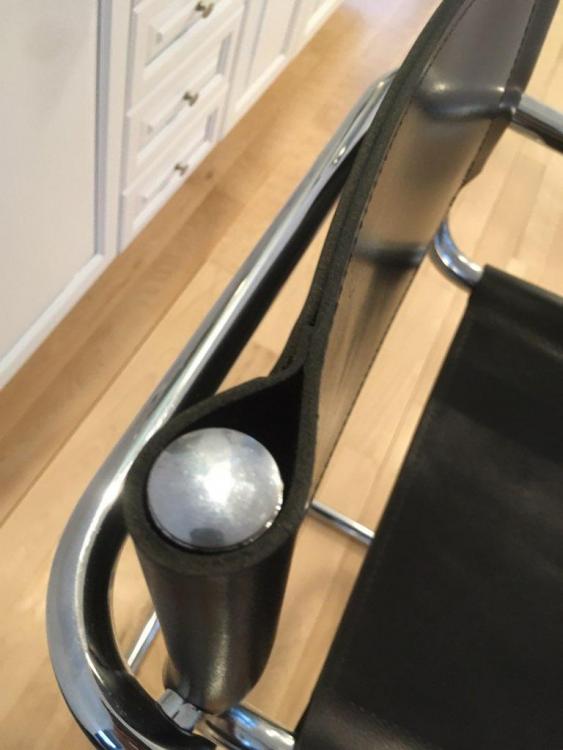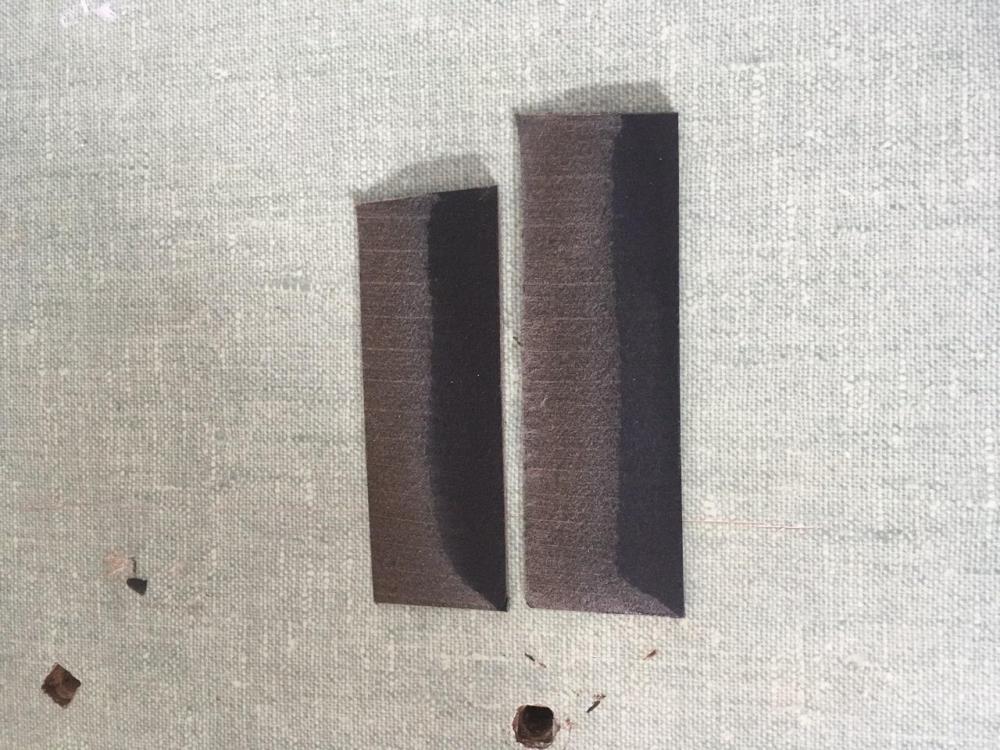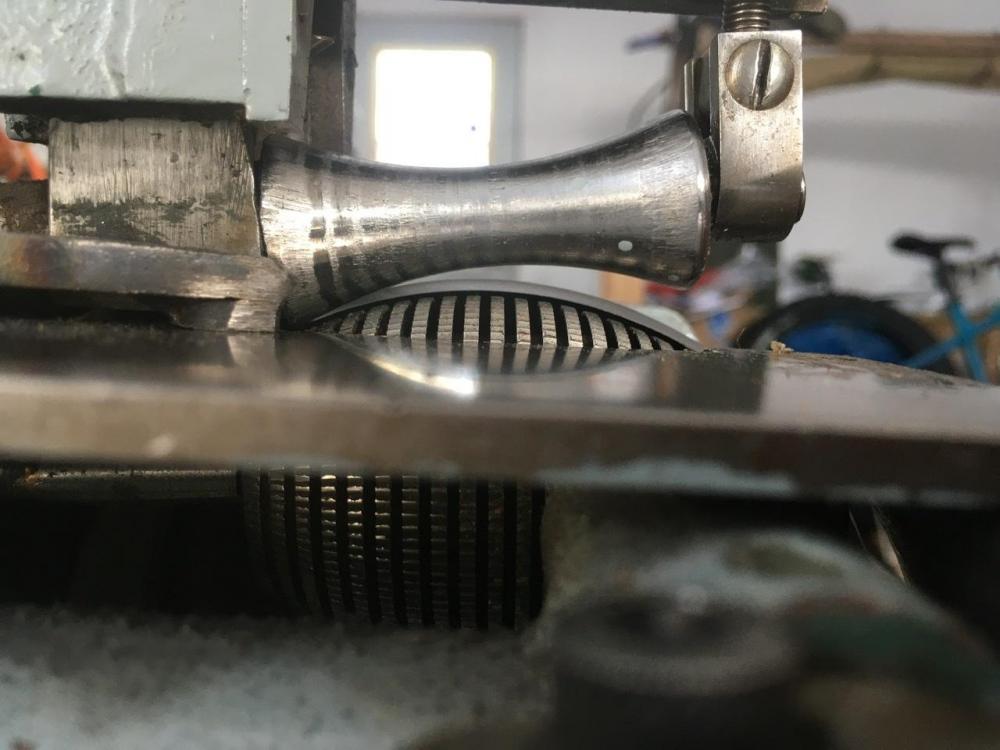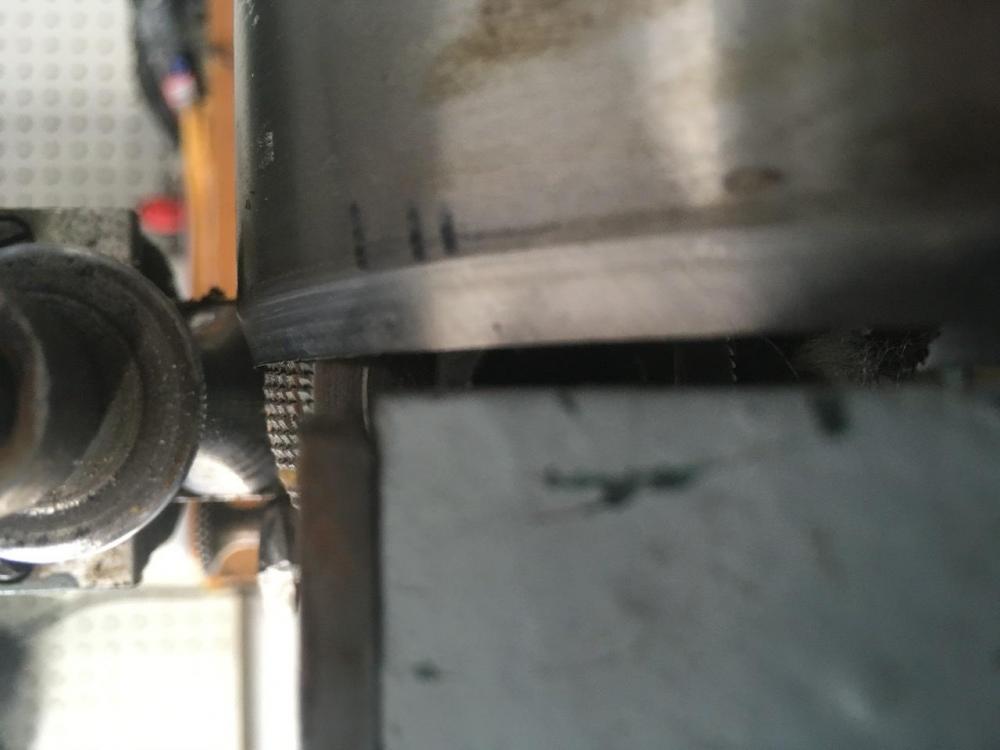
vblouindemers
Members-
Posts
16 -
Joined
-
Last visited
Content Type
Profiles
Forums
Events
Blogs
Gallery
Everything posted by vblouindemers
-
I do auto upholstery so a edge guide is useful. I use those, cheap but nothing wrong about it. https://www.ebay.com/itm/Suspended-Edge-Guide-for-Industrial-Sewing-Machine-Juki-DNU-241-1541-DSC-244-246/143603133045?hash=item216f69ea75:g:ANwAAOSwpAhc85qk
-
miracles of China... of course the reverse is on the wrong side.... who's willing to bet the numbers won't be accurate? EBAY LINK
-
Hi, anybody here has parted a 1245 or similar machine and kept parts? Mine is missing the stitch lenght indicator plate and it makes me sad now that have fixed it and it sews perfect. Let me know!
-
PFAFF 1245 - adjustments sequence
vblouindemers replied to vblouindemers's topic in Leather Sewing Machines
No idea wether it's a H3 or H4. But still, should the lift be the same if I use the knee lift or the lever? And if I go a little after the Top bottom center on the needle so I am sur I do not skip a stitch while turning, even the knee lift will give me little clearance. Still some fiddling to do on that I guess. Might have tried to adjust the lift too high in my pursuit to reach the mentioned 14mm (manual said it not me, my model is a 706-47).) -
PFAFF 1245 - adjustments sequence
vblouindemers replied to vblouindemers's topic in Leather Sewing Machines
Of course! Well I got it, after spending another hour or so contemplating the marvels of german engineering, I realized the presser foot bar had a little roller and that roller remained mysteriously still when I was raising / lowering the presser foot. Ended up this roller has to rest against a little block for front / back support and it was not. Loosened the 2 screws of the said block, moved it so it rests against the roller and voila. Smooth movement. I still have 7mm of clearance under foot with the foot lift lever, and 11mm with the knee lift which seems off (10mm lever / 14mm knee seems to be the correct value) but that I can live with for now. Thanks for chiming in gentleman. Vincent -
PFAFF 1245 - adjustments sequence
vblouindemers replied to vblouindemers's topic in Leather Sewing Machines
Thanks DoninReno, I spent quite a lot of time observing everything but can't seem to find where the binding will occure. Just to add that setting the pressure feet lift to maximum height will exacerbate the binding while setting it to the minimum will make it hardly noticeable. Vincent -
PFAFF 1245 - adjustments sequence
vblouindemers replied to vblouindemers's topic in Leather Sewing Machines
well I went through the whole manual and I think I have everything set correctly but 2 things still bug me: 1. manual says I should have 14mm under presser foot which I do not have. I have 10mm. 2. I feel some binding / hesitation when the presser foot raises. If I turn the handwheel slowly it will jerk to some extend instead of moving freely. Like the spring was too stiff - I tried with the tension knob removed and still have the same effect. If I raise and lock the foot then the jerking / hesitation disapears, which make me think it is somehow related to the presser foot movement. If you turn the handwheel fast then it is not really noticeable. For comparison I went to my SINGER 211U566 and confirmed this one has a perfectly smooth movement so it's either a PFAFF (which I highly doubt) or the is still something wrong with the machine. Nothing is obviously out of place or loose. Anybody has ever experienced this? https://youtu.be/TVN90AfA9Do -
Hi, I have a new to me 80's PFAFF 1245 that needs adjustment. Of course I bought it with an "adjustment invoice" from a technician but it's not quite it. It sews but has glitches and clearly feet movements are not properly synchronized. I downloaded the manual, and I am getting ready to tackle adjustments. Does anybody know if the adjustments should be performed in the sequence proposed in the service manual? I'd like to take it from scratch and make sure everything is OK. Thanks
-
wassily type stools
vblouindemers replied to vblouindemers's topic in Furniture: Inlays and Upholstery
Thanks to you sir! ended up doing a flat 1/2 thickness skive - the beveled was giving me headaches. Flat was easy and I am cool with the outcome. -
First project ever with the newly acuired skiver. Buffalo leather (8-9 oz), pretty stiff. My 211 was having very little pleasure. 2 bent needles, but the 4 of them are sewn. need a finishing bench for those edges.... Since showing off is the key, lets see some pics! thanks for the help with the skiver, leatherworker.net
-
New to me dual feed fortuna skiver
vblouindemers replied to vblouindemers's topic in Leather Machinery
Thanks for sharing your knowledge Mister Harry. My machine is of the older type and the tension on the feeder roll is dialed in by the means of a pull handle to pull on the spring and preset holes. I will try with lesser tension (I was first suggested to crank the tension up...). When you say "taking a little off of the starting corner (about 1/2 way in) and then start" do you mean hand skiving partially the initial corner, or you mean pulling back on the leather so it does not rest against the "width" guide and then quickly feeding it at an angle towards the width stop? By medium roll, do you mean something in this range ? http://www.campbell-randall.com/public/index.php/product/fav-801-2-50mm-emery-feeding-roller-2-medium-grit-italy or more like this: http://www.campbell-randall.com/public/index.php/product/fav-856-2-50mm-steel-feed-roller-medium-z120 I would rather have you say the grit style (price wise) but I will get whatever I need. so, grinding wheel + belt + dresser, feed roll, deburring stick. Anything I am missing before I hit the buy now button? Again, thanks. -
Hi folks. I bought a old fortuna to reupholster a set of Breuer’s wassily chairs for a friend. I am usually in car upholstery stuff and cechaflo’s videos had me wondering when I would biy a skiver. That project sort of was the tipping point. Bought the machine for 100$ site unseen and well it’s a little rough but should clean up nicely. . I still need a dresser for the grinding wheel (and a proper belt for the said grinding wheel) but the blade was very rough with huge dents and now it’s looking good. I adjusted everything the best I could and got it to skive ok. Well flat skives are good but for the wassily chairs I need a tapered skive and I am having a hard time getting what I want. on every skive the initial cut comes further in the material (even though the thickness of the resulting skived edge is consistent). Tried playing with feed roll tension - angle- height and relative bell knive position with little to no difference. I want a beveled edge to joinn 2 pieces (both skived) of buffalo 3.2mm thick leather I do know my knive is not 100% sharp. Am I doing something wrong? Anybody wants to chime in? Thanks!
-
211U566 forward / reverse balance
vblouindemers replied to vblouindemers's topic in Leather Sewing Machines
If I understand correctly you get it right... but wrong. The 566 has 2 adjustments where the 166 has only one - the rocking mecanism itself ( fig. 25 - E2 & F2) plus an adjustment for the reverse stitch residing in a excentric bushing at the end of the shaft F2 that you can rotate to anticipate / retard the moment at which the shaft will hit the block at the end of its course. I think that would allow you to maintain full forward course while reducing the reverse even more. In the machine features they mention "independently adjustable forward and reverse stitch lengths" which I assume it what it means. The adjustment is somehow limited to certain parameters, but that they don't tell you.... :-) Again, 1000 thanks. -
211U566 forward / reverse balance
vblouindemers replied to vblouindemers's topic in Leather Sewing Machines
Just wanted to say thank you for feeding the faith. I was able to balance forward / reverse with giving up a little forward length. From what I can tell, the reverse is always a "ratio" of the forward advance and only in reducing the forward motion you can get the ratio to 1:1. Gives me roughly maximum 7 mm forward / 7 mm reverse instead of the 8.4 forward / 5mm reverse stated in the manual. I am cool with that. I do not use the 8.5mm too often anyway. I can always trick it back if need be now that I know my way around it. I adjusted the reverse excentric (near the screw B in fig.38) to the maximum setting, then tricked the reverse mecanism F2 until forward and reverse matched. Changed stitch length on the machine, they are still balanced. Bingo. I am a happy sewer. Again, thanks! -
211U566 forward / reverse balance
vblouindemers replied to vblouindemers's topic in Leather Sewing Machines
damn these are very bad news.... Thanks for the reply anyway! -
Folks, gurus, aficionados.. I acquired a singer 211U566 a while back for my auto upholstery work. My reverses stitching (when needed) is always hidden so I have never cared about the reverse not matching the forward feed. Now a friend of mine asked me to refurbish his wassily chairs and so having balanced forward and reverse is important as the sewing will be in plain view. I have tried adjusting the excentric roller at the end of the reversing shaft which helped but reverse is always shorter no matter what stitch length is selected. The longer stitch setting is precisely 3 stitches per inch so I assume the machine was not "tweaked" for longer forward stitch length as I read can be done. I found a manual for the machine this morning. The manual states that the reverse max stitch length is around 5mm, which is pretty much what I get if I adjust the excentric roller to it's most permissive location. The manual is not so clear regarding the possibility of balancing the forward / reverse feed as it is in the 211G166 manual. So, to all of yall who know the tricks of the trade, should I be able to balance the forward / reverse on my 211U566 ? Or they (the factory) tweaked something to get longer stitches (3/inch compared to 5/inch on my 211G166) but in doing so lost the possibility to get balanced forward / reverse motion. Thanks for your help, I can send pics if needed. And if I missed the answer in my research, please point me in the right direction.



